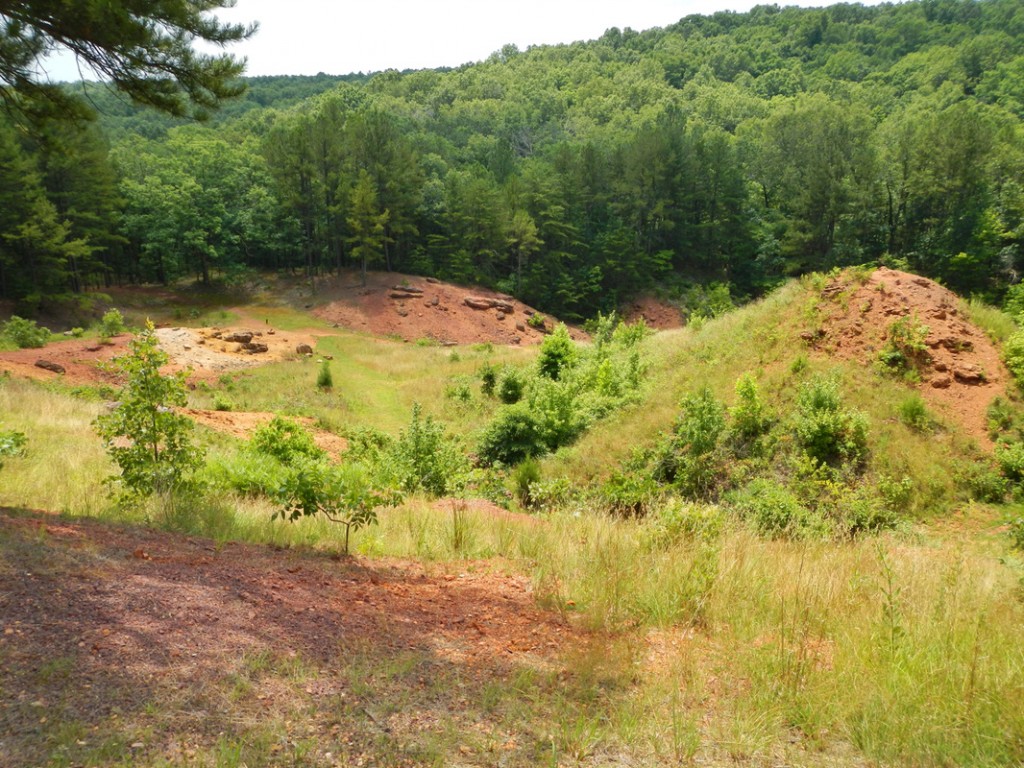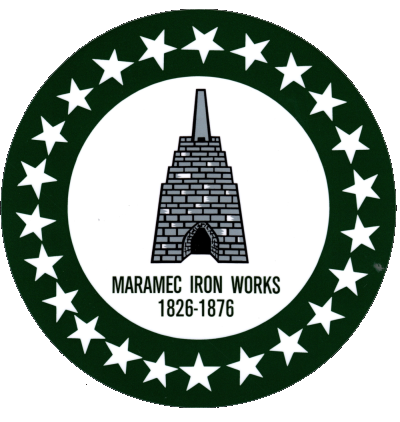Historic Drive & Cemetery
While at Maramec Spring Park, take a scenic drive along the historic Stringtown Road, explore and hike around the old Maramec Iron Mine, and visit the Maramec Village Cemetery.
Stringtown Road
Constructed around 1824 and expanded in 1826 to serve the iron workers and its residents, Stringtown Road originally stretched from St. Genevieve, MO, to Springfield, MO. Named for the line of cabins strung along its route, it played a crucial role in transporting wood and charcoal to the iron works, carrying iron products to market, and serving as a route for westward travel. The road retains much of its 1800s character, despite the absence of the original cabins. While traveling along Stringtown Road, carefully read the signs posted at each housing site to learn about the history left behind.
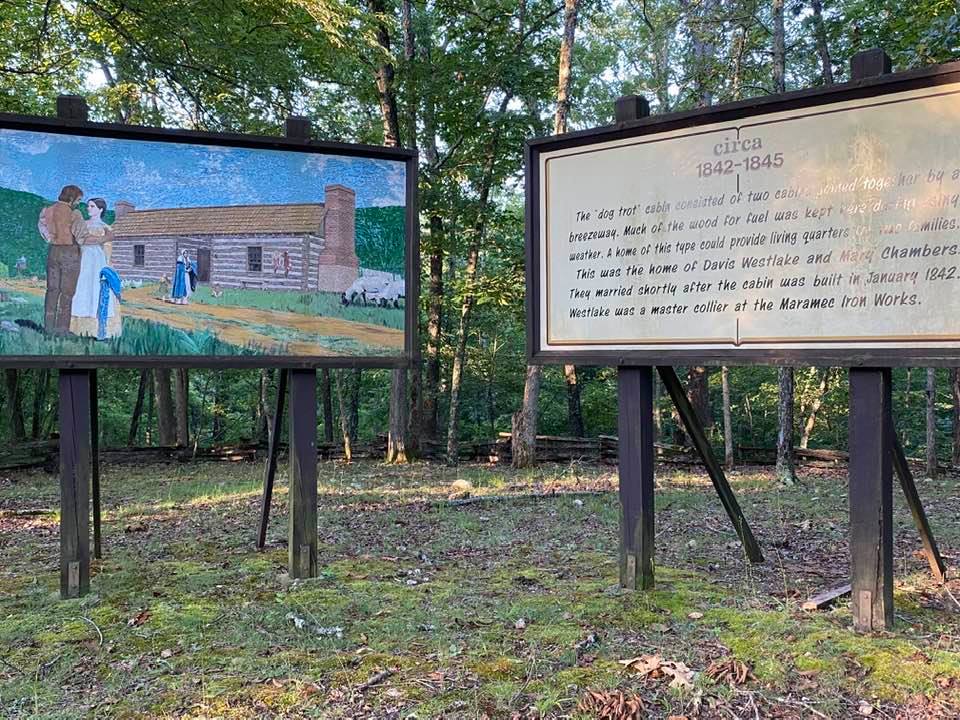
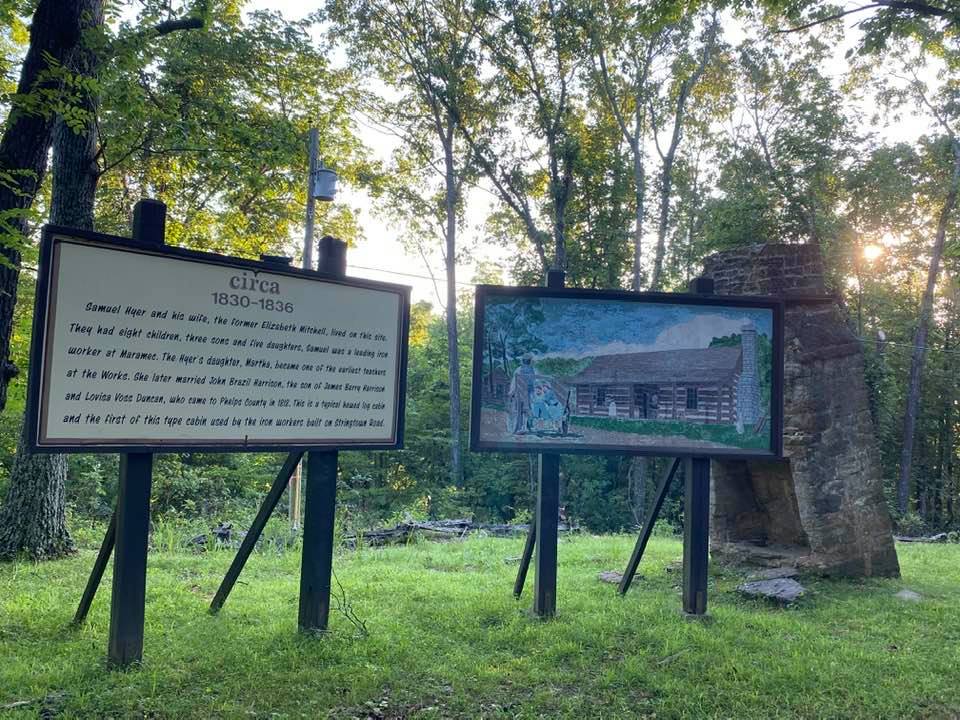
Maramec Village Cemetery 1858-1882
This cemetery serves as the final resting place for approximately 250 individuals associated with the Maramec Iron Works. Many graves belong to children who succumbed to diseases resulting from unsanitary living conditions in the 1800s. With limited medical resources and preventive measures, children often didn’t receive regular healthcare, contributing to large families and high child mortality rates. Notably, the wrought iron-fenced graves mark the final resting place of five out of twelve children of Albert and Nancy Long. These young lives tragically ended between the ages of 2 months and 14 years.
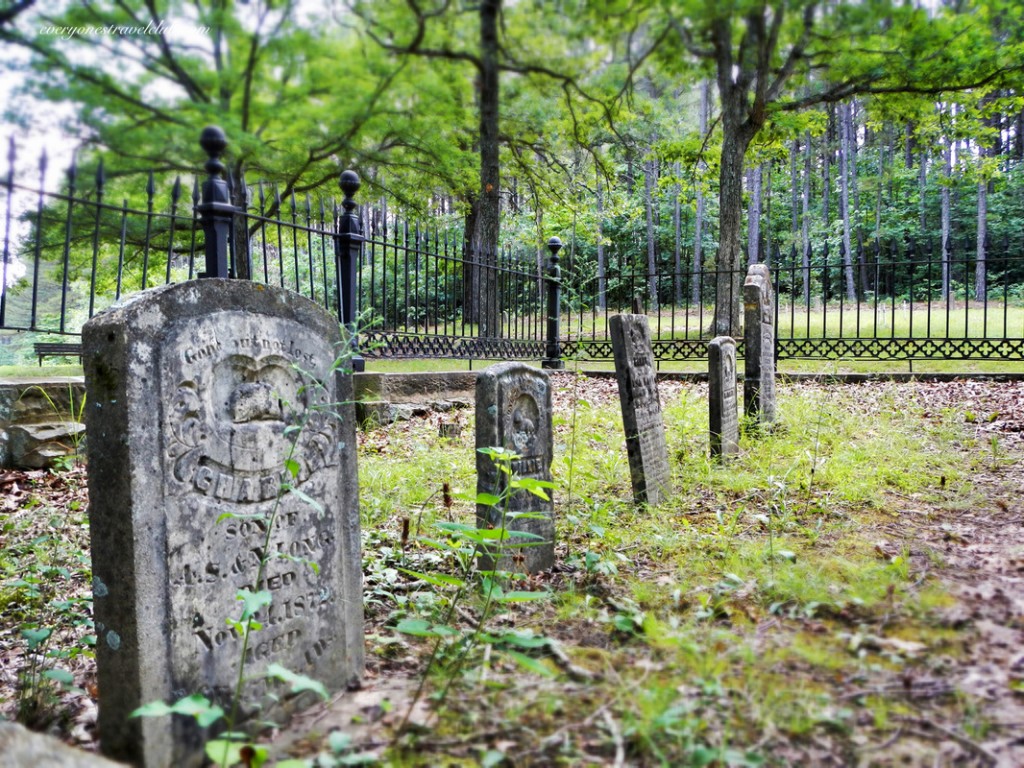

Maramec Iron Mine
The main iron ore body, 225 feet in diameter and about 80 feet deep, lay just below the surface. Mining, primarily open pit, or strip mining, involved removing overlying soil, digging out the ore, and hauling it away and did not involve underground tunnels. Over its fifty years in operation, the mine yielded approximately 375,000 tons of iron ore. Wagons, pulled by oxen or mules, transported the ore to the furnace, which consumed between twelve and thirty tons per day. By the late 1800s, the mine’s iron ore was nearly depleted, leaving behind poor soil. Over the past century, the soil has improved, supporting plant life like pine, sycamore, blackberry, and mullein.
The mine area, lacking cover for larger animals, is home to reptiles, especially visible during cooler hours. Other animals, like deer and red foxes, occasionally traverse the area, and birds can be spotted seeking berries and seeds in the morning.
